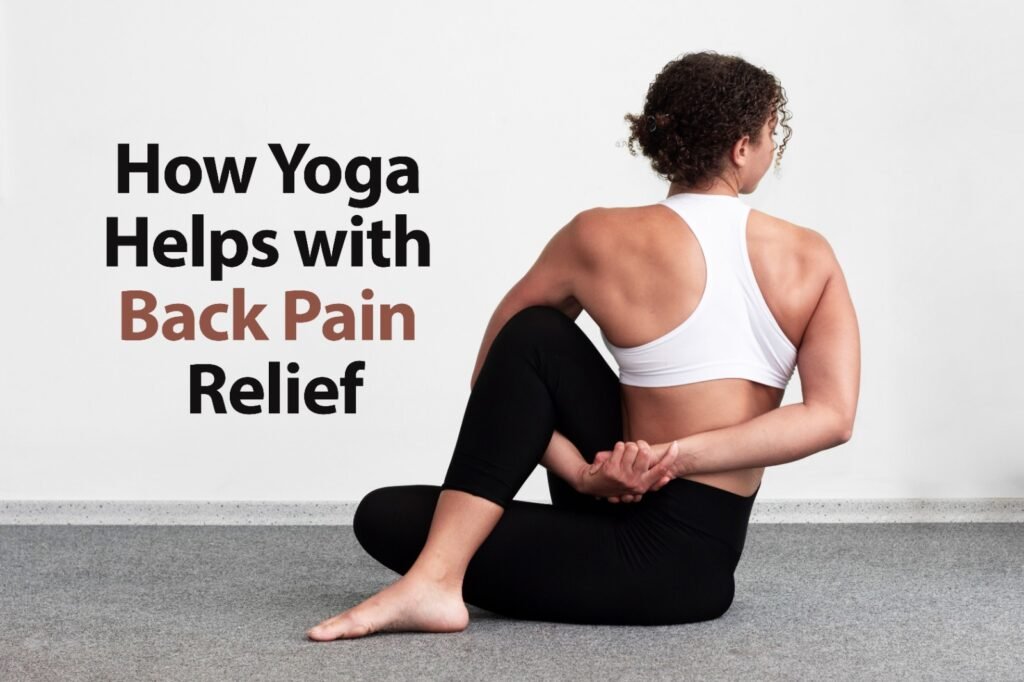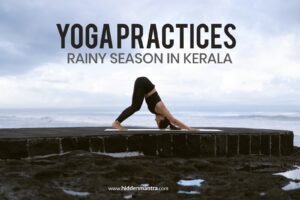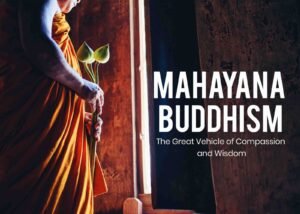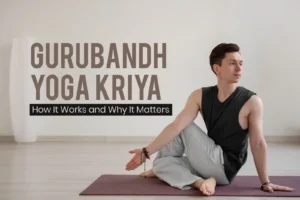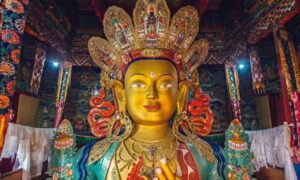Table of Contents
ToggleIn today’s daily life, back pain is one of the most common issues faced by a significant portion of the population, including adults. Due to various reasons like strain, injuries, sometimes lack of practicing exercise, etc., it leads to diseases that affect the quality of life. Yoga for back pain is a holistic approach to get relief and enhance the flexibility and overall wellbeing of both mind and body
Understanding Back Pain
There are different types of back pains that help to identify which type of back pain you are experiencing.
Acute Pack Pain
Acute back pain happens in the back side of the body suddenly, and it lasts for a few days or weeks. Acute back pain happens through injuries, or strain.
Sub-Acute Back Pain
Sub acute is another form of back pain that often happens due to various causes such as muscle strains, nerve issues or joint pain etc.. lasts for 4 to 12 weeks.
Chronic Back Pain
Chronic back pain is another stream of back pain. This typically happens slowly or suddenly and longer for more than 12 weeks. Chronic back pain occurs daily.
How Yoga Helps in Relieving Back Pain
Yoga, a calm movement to refresh and refine the body of individuals slowly and promote stress reduction and relief from tension, pain, and also provide a better understanding about the connection of mind and body.
Nowadays back pain is a common problem that is experienced by a wide range of people. Practicing yoga provides great relief from back pain. Practicing yoga contributes great relief from back pain and strengthening the core muscles along with improving posture. Often back pain occurs due to various causes, regular practicing of yoga is effective for reducing back pain and overall wellness.
Recommended Yoga Poses for Back Pain Relief
Following are the different forms of yoga poses for back pain relief and their benefits.
Cat Cow Pose
Cat cow pose or “Bitilasana Marjaryasana” is an ideal yoga pose for those who are experiencing back pain. The term “Bitilasana Marjaryasana” originates from Sanskrit text and the word “marjari” means ‘cat’, bitila means ‘cow’. As a balancing pose for beginners, this yoga pose helps to improve posture and balance.
Benefits of Cat Cow Pose
1. Improve Flexibility
Improve flexibility and mobility along with strengthening the entire length of your back by gently flexing and extending your spine.
2. Relieves Stress
It incorporates rhythmic breath and slow movements that helps to reduce stress and makes the mind calm.
3. Reduce Back Pain
Cat cow pose is one of the best solutions in yoga for back pain . Regular practice can help to reduce back pain by contributing flexibility and get relief from tension.
4. Enhanced Coordination
Cat cow poses motivate the coordination of breath and movement and contribute a sense of body awareness and mindfulness.
Read More: Top 5 Benefits Of Yoga
Child’s Pose (Balasana)
Child pose or “Balasana” is a kind of yoga pose in modern yoga exercises. It originates from the Sanskrit words ‘bala’ which means ‘child’ and another word ‘asana’ which means ‘pose.’ Balasana contributes to relaxation and relief from stress.
Benefits of Child’s Pose
1. Improved flexibility
Practicing “Balasana” helps to enhance flexibility in spine, and hip areas, contributing to all wellness.
2. Reduce Back Pain
Child pose is widely used in yoga for back pain and helps strengthen the lower back.
3. Improve Blood Circulation
Regular practice of Balasana helps to improve blood circulation, particularly in the head and neck areas.
4. Improve the Digestive system and reduce menstrual discomfort
Child’ s pose helps to improve the digestive system and decrease menstrual discomfort.
Downward Facing – Dog (Adho Mukha Svanasana)
Downward facing dog or ” Adho Mukha Svanasana”, an inversion yoga exercise as a part of Surya Namaskar. Beginners can also practice this pose, and while doing the pose, our body looks like a dog, and the posture enhances upper body strength and flexibility.
Benefits of Downward Facing – Dog
1.Relief From Tension and Stress
This pose is also a common practice in yoga for back pain, helping relieve built-up tension. Improve flow of blood circulation to the brain.
2. Improved Blood Circulation
Child’ s pose improves the flow of blood circulation to the body. It make the function smooth and easy.
3. Strengthen the Upper Body
This yoga pose makes the muscles in the arms, shoulders, and upper back stronger.
4. Strengthen the Bones
Adho Mukha Svanasana helps to strengthen the bones on the wrists, legs, and arms.
Triangle Yoga Pose (Utthita Trikonasana)
Triangle yoga pose is a standing yoga pose. It is one of the key standing yoga practices and requires balance and flexibility. Triangle pose otherwise referred to as “Trikonasana” which has two meanings such as ‘trikona’ meaning ‘triangle’ and ‘asana’ meaning ‘pose.’
Benefits of Extended Triangle Pose
1. Increase Stability
This posture helps in balance and stability by activates the core muscles
2. Stimulate the Organs
This asana activates your core, which refreshes your digestive organs and refines your metabolism.
3. Stress Reduction
Triangle pose can be used for the lower back, which helps to relieve tension, which can lead to reduced anxiety and a more stable emotional state.
4. Opens the Hips and Shoulders
This pose opens the hip muscles and shoulders, which increases strength and lowers the risk of injury.
Sphinx Pose
Sphinx pose or “Salamba Bhujangasana” is a deep resting and healing backbend yoga pose to relieve tension or pain in the lower back. It is the combination of three Sanskrit words such as ‘salamba’ which means ‘supported,’ ‘bhujanga’ meaning ‘snake’ and ‘asana’ which define ‘pose.’ It refines the spine and refreshes the organs of the stomach.
Benefits of Sphinx Pose
1.Relieves Back Pain
Helps to get relief from back pain by slowly extending the back muscles and improving spinal alignment.
2. Promotes Relaxation
The pose contributes to relaxation and alleviates stress by relaxing the mind and gently extending the body.
3. Engages Core Muscles
Sphinx pose engages the core muscles, and strengthens them and improves stability.
4. Stimulates Digestive Organs
The slow pressure on the stomach can revive the digestive system and helps in digestion.
Pigeon Pose (Eka Pada Rajakapotasana)
Pigeon pose otherwise “Eka Pada Rajakapotasana” is applicable for mid-way level yoga practitioners. Eka Pada Rajakpotasana has the mixture of three terms ‘Eka’ means ‘one’, ‘Pada’ which means ‘foot’ and ‘Kaptosana’ means ‘Pigeon’ last word ‘Asana’ which means ‘posture.’
Benefits of Pigeon Pose
1. Improve Posture
Pigeon pose can help combat poor posture by extending the muscles of the hips and arms and relaxing the muscles of the spine and neck.
2. Back Pain Relief
It helps to get out of tension, decrease pain, and improve flexibility in this area.
3. Increases Hip Flexibility
Pigeon yoga pose is an effective hip opener that expands the hip flexors, hamstrings, and outer hip muscles.
4. Stretches the Thighs and Glutes
This pose extends the thighs and glutes, contributing flexibility and mobility in those areas.
Scientific Evidence Supporting Yoga for Back Pain
Recent findings manifest that yoga practices are highly recommended for improving flexibility and overall well being of individuals particularly those who want to improve the body through calm and resting practices by promoting relaxation, improved digestion, out of stress, back pain, anxiety, and enhanced posture.
Tips for Practicing Yoga Safely
Yoga, a mindful movement to improve the wellness of individuals and for getting a quality life. Nowadays, online channels and websites provide clear insights and guidance about practicing yoga carefully. However, it’s better to consult a doctor before beginning the yoga practice only if you are a beginner or have any health issues.
Conclusion
Yoga for back pain is the best solution for those who are suffering. Recent studies manifest that a large population is practicing yoga regularly to get relief from different kinds of problems such as strain, relieves pain, improves posture and balances the body etc. Follow Hidden Mantra For more blogs Related To Yoga
Read More : Principles of Ayurveda

